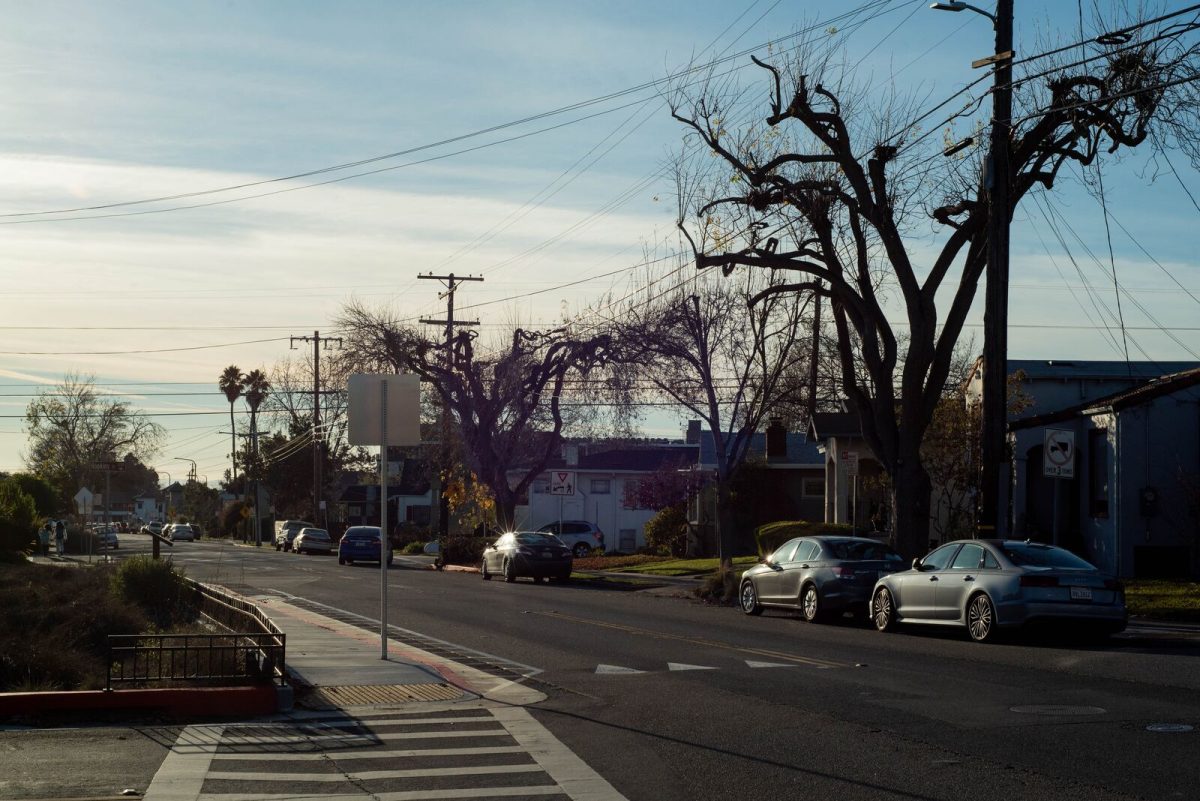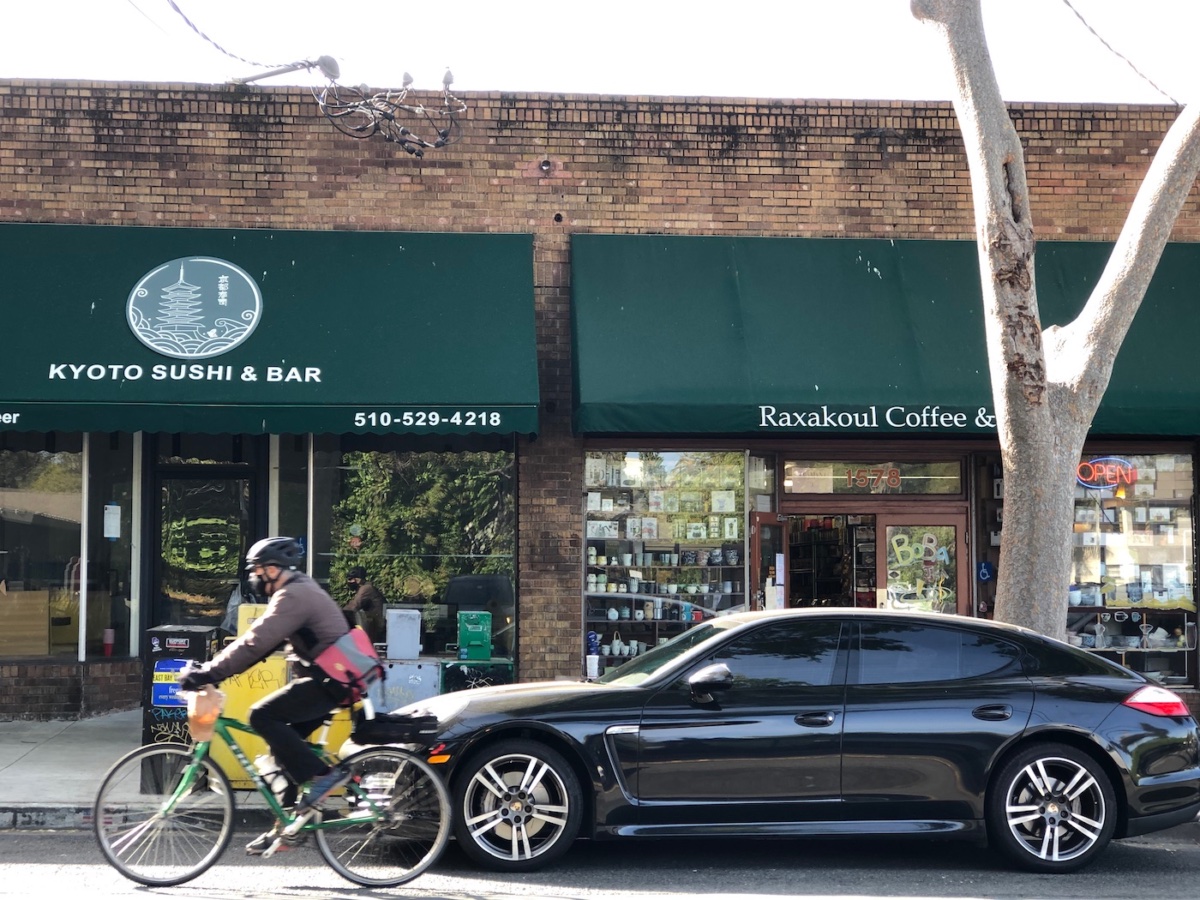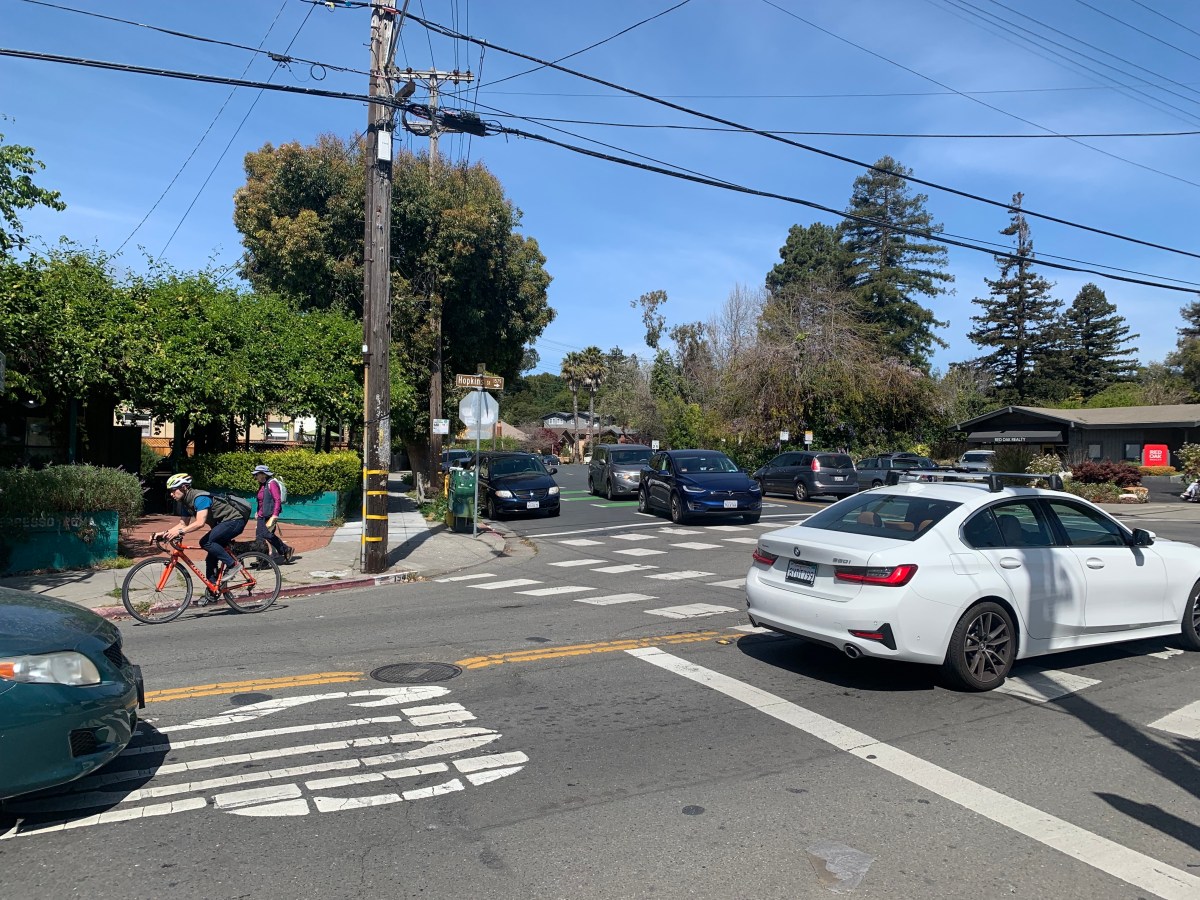
Plans to build protected bike lanes along Hopkins Street have sparked months of heated debate because the new cycle track would require the removal of many street parking spaces. Now there’s another contentious question facing the North Berkeley roadway: How far down Hopkins should the lanes extend?
After approving a proposal earlier this year for a two-way bicycle track that runs from Hopkins’ east end at Sutter Street to its intersection with Gilman Street, the City Council will next decide whether to keep the lanes going for another half-mile to Kains Avenue, which Alameda County officials are eyeing for upgraded bike infrastructure in the coming years.
Bike advocates love the idea, which would connect the track with the popular Ohlone Greenway and mean almost the entire length of Hopkins — from near San Pablo Avenue in West Berkeley to the foot of the hills — offers protections to keep riders safer from cars.
“We need these bike lanes,” said David Shere, one of more than 200 people who joined a virtual meeting about the project this week, “and we need them all over the city.”
But some residents are fiercely opposed to the idea because the extension would require eliminating yet more parking. The redesigned roadway would get rid of most of the on-street parking on Hopkins’ western end, about 130 spaces if extended all the way to Kains Avenue, and leave several blocks with no spots at all. The city is also considering a shorter, one-block extension to Acton Street and a three-block extension to the Ohlone Greenway.
Berkeley could extend a planned bike lane along Hopkins Street by one, three or nine blocks.
“It would hugely, immensely affect the parking,” said another participant at the meeting, Ali Lahijanian. “I don’t understand why we need a bike path on Hopkins.”
Dozens of people spoke for and against the project at the meeting Monday night. The Zoom forum’s publicly visible chat filled with hundreds of comments, at times vitriolic, as people sparred over the value of the lanes and the parking trade-offs they would require.
For the most part the battle lines looked the same as those that were drawn during the debate over the eastern portion of Hopkins, which divided neighbors and frequently pitted bicyclists against merchants on the street’s popular strip of local businesses.
Opponents argue the parking reductions will create headaches for Hopkins’ residents and visitors, particularly those with limited mobility such as seniors; if parking is too inconvenient, businesses fear, customers will stay away. Proponents counter the lost parking is a worthwhile cost for new bike infrastructure that they say will attract more people to Hopkins and its businesses, as the protected lanes encourage inexperienced cyclists and children to ride with less fear of being hit by a car.
“I think the whole project is a disaster,” said activist Margot Smith.
“Even with the bike lanes about 75% of the roadway is devoted to cars,” said Charles Siegel, who supports them. “It’s kindergarten-level stuff — we’re supposed to learn to share.”
The City Council voted last May to approve the plan for a nearly mile-long bike lane from Sutter Street to Gilman Street. In October, after more detailed information about the project’s impact on parking was made public, the council voted to continue planning for the lanes while also further studying the area’s parking needs.
Once that study is complete, the project is expected to make a third appearance before the council on Jan. 31, when members will decide whether to stick with the bike lanes or change the project — and how far they will extend along Hopkins’ western end.
Construction is set to start next summer, when Hopkins is repaved.
The advocacy group Walk Bike Berkeley has pushed for the city to extend the new lanes beyond their current planned end at Gilman Street. Northwest Berkeley Councilmember Rashi Kesarwani introduced an item to launch the planning and public outreach process for the western end of the project in May.
While the residential stretch of Hopkins between Gilman and Kains doesn’t have a business district, it faces the same challenge that forced difficult trade-offs farther up the street: the roadway is too narrow for everyone to get what they want.
The western portion of Hopkins today has two traffic lanes, two parking lanes and no dedicated space for bicycles. The street isn’t wide enough to add any kind of bike lane without removing parking — even a narrower unprotected lane would require getting rid of the spaces on at least one side of the street, Berkeley transportation director Farid Javandel said. Berkeley plans to install a wider protected two-way bike track that includes a concrete curb to keep cars out of the lane.
If officials approve a full extension of the bike track to Kains Avenue, the four blocks from Gilman Street to Northside Avenue would have no on-street parking, while some of the blocks between Northside and Kains would still have parking on one side of the street.
City officials have not provided cost estimates for the extension, though Javandel said it is “not likely to be particularly high” compared to the broader $3.6 million paving project.


